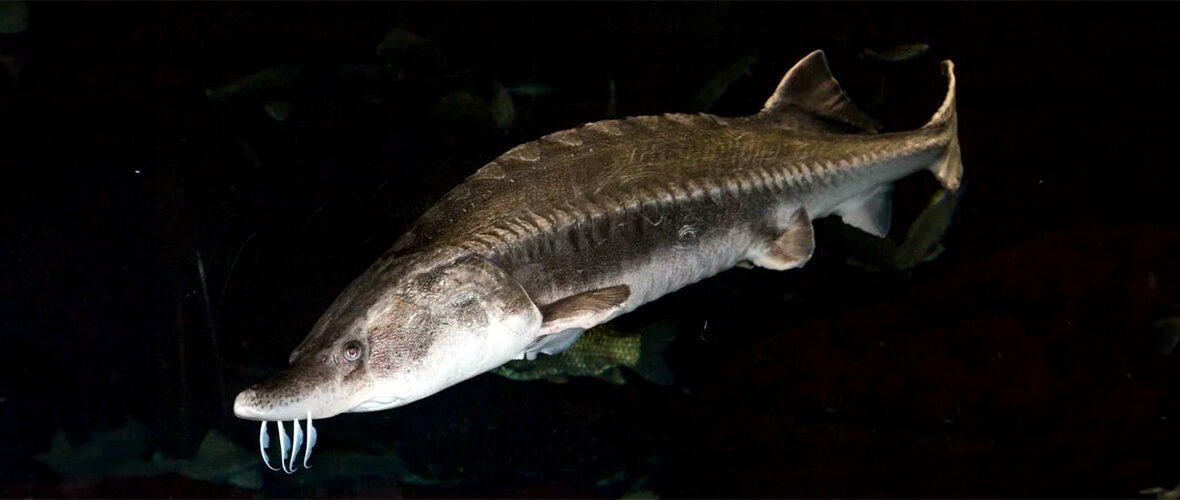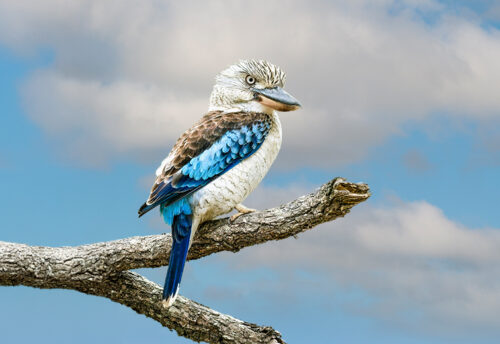
The beluga sturgeon, aka great sturgeon, dwells in the Caspian and Black Sea basins, and previously in the Adriatic Sea. They are the 3rd largest species of bony fish, with the Mola mola – ocean sunfish being number 1 at 10.8 feet and 2.3 tons! Due to overfishing, over harvesting of their roe (eggs), pollution, habitat loss (due to the construction of dams), and with their slow reproduction rate these fish are listed as Critically Endangered by the IUCN. Their populations are also decreasing.
First the Stats…
Scientific name: Huso huso
Weight: Up to 582 lbs.
Length: Up to 10.9 feet
Lifespan: Up to 100+ years
Now on to the Facts!
1.) The female’s roe, aka beluga caviar, is heavily sought after as a delicacy.
2.) Their common name beluga is derived from the Russian word белый (belyj), meaning “white,” and likely refers to their light colored flanks.
3.) Their dorsal fin has up to 81 soft rays, and the anal fin has up to 41 soft rays.
4.) The surface of their skin is covered by fine denticles, much like a shark’s.
5.) The largest accepted record of a beluga is that of a female taken in 1827 in the Volga estuary at 3,463 lbs. and 23 feet 7 inches long!
But wait, there’s more on the beluga sturgeon!
6.) As sturgeons go, only the closely related kaluga has the ability to reach similar size, with a maximum weight of up to 2,200 lbs.
7.) These fish are sexually dimorphic in that females are up to 20% larger than males.
Did you know…?
They are the 2nd longest bony fish after the giant oarfish. However, they are the longest freshwater fish in the world.
8.) Like many other sturgeons, the beluga is anadromous (move from 1 body of water to another to breed) migrating upstream in rivers to spawn on cleaner, hardened substrate, that provides both support and cover for their sticky, adhesive eggs.
9.) They can travel upwards of 1,100 miles upstream to spawn.
10.) Their slower reproductive rate is due to the age at which they need to reach in order to become sexually mature. Males reach sexual maturity at up to 16 years of age, whereas females do so at up to 22 years of age.
But wait, there’s still more on the beluga sturgeon!
11.) When feeding, they open their mouth very quickly to create a suction, drawing their prey item into their mouth.
12.) They prey primarily on fish, but they also eat molluscs, crustaceans, aquatic birds and even young seals.
Did you know…?
Pollution from a variety of sources, like oil, sewage, industries, and agriculture, is a serious threat to the belugas. Their long lifespan makes them vulnerable to pesticide contamination that results in reduced reproductive success and other health issues.
13.) Beluga sturgeonfish are considered euryhaline (capable of moving freely between freshwater and estuaries) and thus are able to tolerate varying degrees of salinity.
14.) While their meat isn’t as sought after as other fish, their eggs are in high demand and the primary reason for over harvesting.
15.) Since 2015, an official captive breeding program has been set up in Italy, with beluga from the Azov Sea. in 2019 fish ladders were built on the Isola Serafini dam which enabled hundreds of belugas to enter the Po river.
Now a Short Beluga Sturgeon Video!
Be sure to share & comment below! Also, check out the Critter Science YouTube channel. Videos added regularly!
Want to suggest a critter for me to write about? Let me know here.
Some source material acquired from: Wikipedia & IUCN
Photo credit: L’Aquàrium



